Rats are often considered as dogs of the rodent world. If given an opportunity, they can become excellent loving pets. They are small, intelligent, and come in so many varieties of colours that it makes it almost impossible to choose one over the other. Many organizations recognise a different variety of rats based on their own research and conclusions.
In this article, we will discuss almost every basic variety of rat there is so that you can get a clear choice of what you want.
Understanding Rat Species and Variety
Before listing down the various types of rats there are, it is important to understand the basic difference between rat species and their varieties. In truth, all types of fancy rats belong to one single rat species called Rattus Norvegicus, also known as the “Brown Rat”.
All brown rats have tails that are roughly as long as their bodies. They can be seen with a fairly blunt nose, small eyes, and small ears that have hair at their back. In the wild, they all feature one body shape, one type of coat, and are mostly of the same colour.
However, due to the natural occurrence of genetic mutation and a huge contribution from selective breeding, now there exists plenty of varieties of the same rat species, Rattus Norvegicus. These varieties include rats with a wide range of colour variants, coat textures, and interestingly two types of ear positions.
Therefore, when we talk about rat varieties, we actually mean one species. Hence, the word ‘variety’ in the rat's world can refer to any of the following
- Rats with smooth or curly body coats
- The type of ears they have
- The colour of their fur
This also means that there can be more than one rat in a single variety. For instance, you can get yourself a rex which is a coat type, or you could get a Dumbo which is an ear type, or you can go for a black which is a colour type. If this isn’t enough, you also have the option of hooded rats and many more.
Most Adopted Rat Varieties
There are many types of rat varieties that have been discovered since selective breeding came into play. However, we are going to cover only the most adopted rat varieties, according to their mutation type, today.
Popular Body Types of Rats
Given below are the classic body type rats.
Standard Body Type Rats
This variety of rats have the typical wild type of rat ears. Their ears are of normal size and are placed on top of their heads. They require a normal diet and are very intelligent in nature. If taken good care of, they become very friendly pets. These rats are also popularly known as top-eared rats.
Dumbo Rats
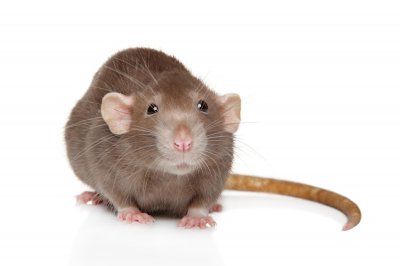
Dumbo Rats have somewhat big round ears that are placed lower on the sides of their head, which make it look like they stick out sideways. Even the head appears to be big and round, but that’s just a visual trick because of their ear position.
Apart from this, people also believe that Dumbo rats are friendlier and have a longer lifespan when compared to the standard rats. However, that isn’t true at all. Their lifespan and friendliness depend on the line of the family they come from and how well they are cared for.
In any case, both Dumbo and standard rats are easy to breed in different coat types and colour varieties.
Manx Rats
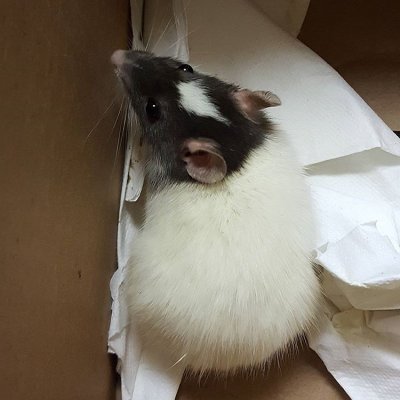
Much like a Manx cat, a Manx rat is also tailless, although some rats have a partial or stub kind of tails. They appear to be smaller and slimmer when compared to other rat varieties. Since having a tail is important for maintaining body balance, Manx rats may face difficulty in managing themselves and may need additional care.
Make sure you do a good amount of research about what all is required to keep a Manx in good health and shape before you finally decide to adopt one.
Dwarf Rats
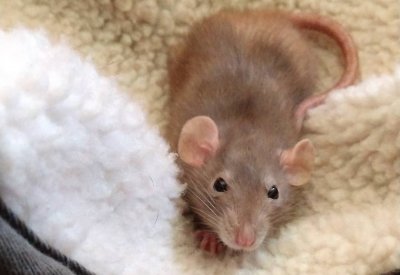
Dwarf rats are a very popular rat variety. Just like their name suggests, they are very small in size when compared to any other rat variety - around 1/3rd of the size of a normal rat. Since they are very small in size, they may prove to be a little difficult to handle.
In any case, they are very friendly and tend to become much-tamed pets. They can be homed comfortably and are very low maintenance.
Popular Coat Types of Rats
Given below are the popular coat type rats.
Standard Coat Type Rats
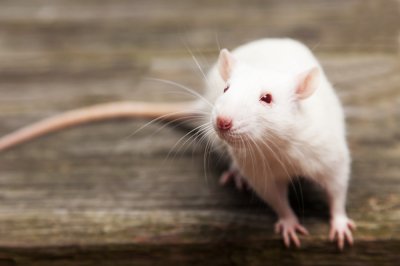
Rats with standard coats have a smooth glossy coat, which is made up of short straight hairs. The hairs lie flat touching the body when the rat is happy and calm, but when the rat is angry the coat becomes fluffed and the hairs stand straight on end. These rats generally have straight long or gently curved whiskers, which they use to sense their surroundings.
Male’s fur usually feels different from the female’s fur. The females generally have more of a soft and silky kind of coat, while the male’s fur can feel coarser and greasier. This is mainly due to the presence of male hormones which make the rat bucks produce an orange grease from their skin, known as buck grease.
However, males who receive proper care can develop a much softer coat. Moreover, the condition of the coat also depends on the diet. If a good diet is provided, they can develop a soft and shiny coat, while a poor diet can result in the greasy, brittle, dull, or dry coat.
Rex Rats
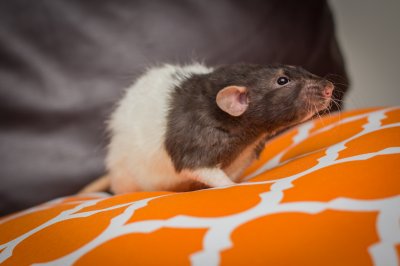
Rex rats have curly and crinkly fur. Even their whiskers and eyelashes are curled up. When touched, they feel very soft and woolly. They even have a popular nickname of sheep-rats. The only drawback of having them is that as they get older, they tend to get thinner fur or bald patches.
In truth, there are a lot of different genes around the world that can cause a rex fur mutation. Those rats which have two copies of the rex gene are known as double rex rats and are sometimes recognized as a separate variety of rex rats.
Double rex rats often have very tightly curled fur which is often very sparse on the body, making them look almost hairless. They even have very tightly curled whiskers and even eyelashes. Hence, special care needs to be taken to avoid eye problems caused by tightly curled or almost absent eyelashes.
Another variety of rat that is similar to double rex rats is patchwork rats. These rats have a very short patchy curly coat that sheds out and grows again in different places across their body.
Hairless Rats or Sphynx Rats
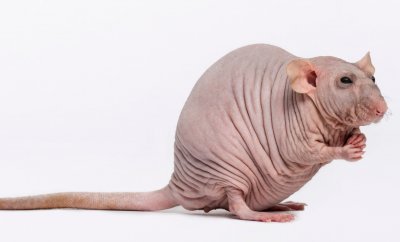
Hairless rats have been selectively bred to be completely bald. However, they often have a small amount of curly fur around their whiskers. The colour of their skin depends on the genes that have been selected for fur colour and markings. Hairless rats with pale colour genes usually develop pink skin, while those with dark colour genes develop black or grey skin areas.
The main concern of owning hairless rats is their health. Since there is no fur to protect them from the cold, they can fall ill easily. Hence, special care should be taken to keep the pet rat warm. Moreover, just like double rex rats, hairless rats are also prone to eye infections as they have little or no eyelashes to protect their eyes from dust.
Hairless rats can be bred by using a variety of genes, but at least one of these genes can cause problems in the mother when lactating. Therefore, if you wish to have hairless rats as pets, then it is extremely important to find a breeder whose rats have healthy genes. This might prove to be a challenge since not many good breeders of hairless rats exist.
Even though this is a popular variety of pet rats, adopting them is not possible in some countries. For instance, some associations such as the National Fancy Ray Society in the UK have completely banned hairless rats from their display.
Popular Colour Types of Rats
All varieties of rats can come in any colour variant. That being said, there is a wide range of possible colours. In any case, coloured rats are mainly divided into two categories, named as non-agouti and agouti-based rats.
The natural colour of rats is known as agouti, which is a brown colour made by banded hairs in black, grey, brown, and orange. This colour in rats occurs due to the presence of a dominant gene. However, in some pet rats, this gene is now absent, making them non-agouti. In non-agouti rats, each hair has the same single solid colour.
Some of the most common colour types of rats from both of these categories are given below.
Black Rats
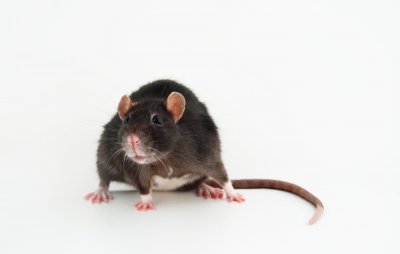
These types of rats are non-agouti based and have no other genes to modify their colour. The fur looks mostly black, with some white hair here and there. In any case, the colour of the coat turns brown as they age, get ill or receive a poor diet.
Red Eyed Dilute
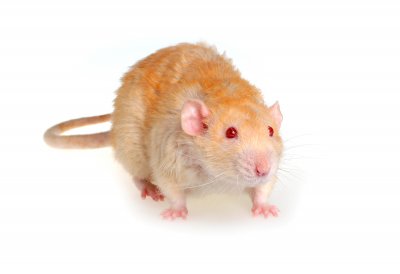
This rat variety is caused by breeding with selected dilute genes. These diluted genes not only affect the colour of their eyes, but also the colour of their coat. An agouti-based rat almost looks like a fawn with a beautiful light colour and a lighter belly.
Albino Rats
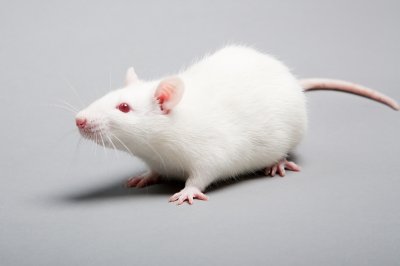
An Albino rat can be identified by its white body and pink eyes. This mutation usually occurs on agouti-based or black rats. In some cases, a rat may look like an Albino, but it might actually be a pink-eyed white rat, which simply has so many dilutions that it looks like an Albino.
Blue Rats
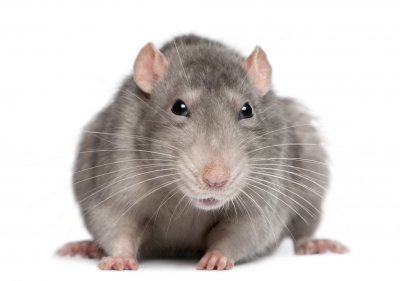
When it comes to blue rats, there are mainly of two types, Russian blue and Slate blue. Blue rats are generally cast with genes which are bluish silver, some very light, and other dark genes depending on which blue and other dilutes the rat may have.
A blue agouti-based rat has a silver, blue, or grey colour with ticked blue guard hairs and a silver belly. The hairs appear blue at the base while they look yellow or tanned at the top.
Mink Rats
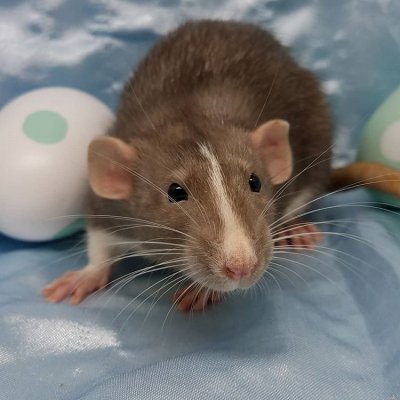
Rats with Mink dilutes are very popular. This mutation results in the colour of the coat to appear browner. An agouti-based rat with Mink dilute, also known as cinnamon, is generally lighter than the Mink and has a reddish brown coloured coat and banded hairs.
A black rat diluted with Mink is simply called a Mink rat, as the dilute brightens the black colour turning it into an even brown. This brown colour can vary from greyish to chocolate.
Which Rat Variety Is the Best?
There is absolutely no answer to which variety of rat is the best. Since all these varieties are bred from a single species, there is not much difference in their personalities. The only difference between all of these varieties is their appearance.
Any rat variety, whether it is a body type, coat type, or a colour type, will require proper care and maintenance. Failing to do so can result in health problems and a shorter lifespan. Therefore, make sure you are ready for their responsibility well before you choose what variety of rat you wish to have.
Conclusion
In this article, we have covered almost all of the popular rat varieties that people love adopting. However, if you think that this is all there is to the rat world, then you are absolutely wrong. There are plenty of other rat varieties that are not mentioned in this article, but they do exist.
Whatever your choice may be, make sure to do proper research about what is required to keep your pet rat healthy and happy. Different varieties require a different kind of care. Hence, knowing the shortcomings beforehand can help you prevent your pet from falling ill regularly and ultimately help in prolonging its lifespan.
Credible sources and further reading:
- National Fancy Rat Society. Breeding Variety Standards
- American Fancy Rat & Mouse Association
- Annette Rand. (2014). The Rat's Whiskers: An experience of rat breeding. Retrieved from amazon.com
- Carol Himsel Daly. (2012). Rats (Complete Pet Owner's Manual). Retrieved from amazon.com